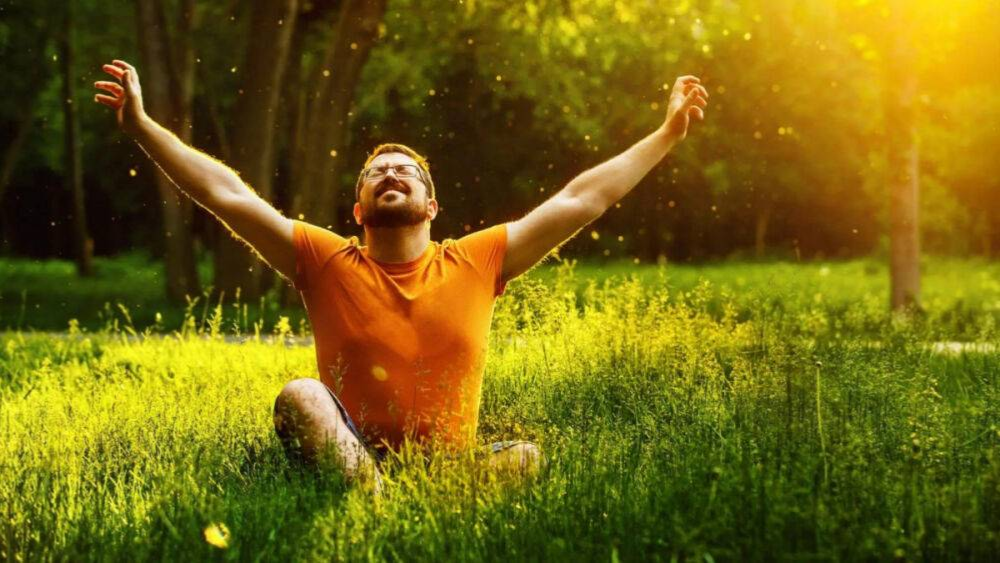Discover how happiness in body language! Learn the subtle cues and non-verbal signs of joy, and how to understand happiness through posture, gestures, and facial expressions.
Table of Contents
Introduction
Ever noticed how someone doesn’t even need to say, “I’m happy,” for you to know they’re in a good mood? That’s the magic of body language! Happiness in body language is something we all experience and recognize almost instinctively. From a warm smile to a relaxed posture, our bodies have a funny way of spilling the beans when we’re feeling joyful.
But what does happiness really look like in body language? And why does it matter? Well, whether you’re meeting new people, managing a team, or simply trying to spread positive vibes, understanding the non-verbal signs of happiness can go a long way in making connections and boosting your relationships.
In this article, we’re going to dive deep into the fascinating world of non-verbal communication, exploring the tell-tale signs of happiness in body language. Let’s get started!
What Does Happiness in Body Language Look Like?

When someone’s happy, their body speaks for them. So, what does happiness look like exactly? Here are some common signs to watch out for:
The Smile Says It All
If there’s one universal sign of happiness, it’s the smile! But not all smiles are created equal. Genuine smiles—often referred to as Duchenne smiles—engage not just the mouth but also the eyes. You’ll notice the eyes crinkle, and the cheeks rise. When someone’s flashing this kind of smile, they’re really happy. Fake smiles? They’re all in the mouth, with no eye action.
Key takeaway: Next time you’re trying to gauge someone’s mood, look at their eyes—not just their mouth!
Relaxed Posture
A person who’s feeling happy will typically adopt a more open, relaxed posture. Their shoulders aren’t hunched, and their body language isn’t defensive. You might notice a slight lean towards the person they’re talking to or a general sense of ease in how they sit or stand. Tension melts away when happiness takes over!
Lively Gestures
People who are happy often use lively, animated gestures. Ever seen someone get so excited that they start using their hands to talk? That’s a classic sign of positive energy and happiness in body language. These gestures are usually open and expansive, rather than closed off or defensive.
Eye Contact and Bright Eyes
Happy people are more likely to maintain eye contact. Their eyes also tend to sparkle a bit—yep, that’s a real thing! The pupils may dilate slightly when someone’s experiencing joy, and there’s an overall brightness in their gaze. So, if you catch someone’s eye and notice a certain twinkle, they’re probably feeling pretty good.
The Psychology Behind Happiness in Body Language

Why do our bodies give us away so easily when we’re happy? Well, it all comes down to psychology and biology.
When you experience happiness, your brain releases feel-good chemicals like dopamine and serotonin. These chemicals don’t just make you feel happy; they also impact your muscles and nerves, causing your face to smile, your body to relax, and your gestures to become more animated. It’s all part of the brain-body connection.
And here’s the cool part: just as our bodies reflect our inner happiness, the reverse can happen too. If you adopt a positive body language—like smiling or standing tall—you can actually trick your brain into feeling happier. Yep, fake it ‘til you make it works!
Why Understanding Happiness in Body Language Matters
You might be wondering, “Okay, so I know what happiness looks like in body language, but why should I care?” Here’s why it matters:
- Builds Stronger Connections: When you can read someone’s happiness, you can respond in ways that strengthen your bond with them. People like to feel understood, and recognizing their joy without them even saying a word is a great way to show you’re in tune with them.
- Boosts Your Social Skills: If you know how to spot happiness in body language, you can adjust your own behavior accordingly. Need to match their energy or mood? Done! Want to create a positive environment? Mirror their happy cues!
- Improves Workplace Dynamics: If you’re in a leadership role, understanding happiness in body language can help you gauge your team’s morale. Happier employees are often more productive and engaged, so if you’re seeing signs of happiness, you’re doing something right!
How to Show Happiness in Your Own Body Language
Want to come across as the happiest person in the room (even if you’ve had a rough day)? Here are some simple ways to project happiness through your own body language:
- Smile More: Smiling, even if you’re not in the best mood, can actually make you feel happier. Plus, smiles are contagious!
- Stand Tall: Confidence and happiness go hand in hand. When you stand up straight with your shoulders back, not only do you feel better, but others perceive you as more positive.
- Use Open Gestures: Avoid crossing your arms or making yourself small. Instead, use expansive gestures and keep your body open and welcoming.
- Make Eye Contact: Engaging with others through eye contact shows you’re interested and present. Plus, it’s a great way to convey happiness and warmth.
Conclusion
Happiness in body language is more than just a smile or a laugh—it’s a whole-body experience! From relaxed postures to sparkling eyes, joy has a way of creeping into our every movement, and once you know what to look for, it’s easy to spot.
Whether you’re trying to understand others better or project happiness yourself, paying attention to body language is a powerful tool. And the best part? Happiness is contagious. So, the next time you notice someone’s smile or bright eyes, don’t be afraid to join in the good vibes!
Isn’t it amazing how much we can say without uttering a single word?
Now, go out there and feel the happiness radiating from others—and let your own body do the talking!
How to Read People Like a Book: Learn to Read Others Easily!
For Video Content: Check Our Youtube Channel
FAQs: Happiness in Body Language
1. Can happiness in body language be faked?
Yes, to a certain extent! While you can “fake” positive body language (like smiling), people are often pretty good at spotting genuine vs. fake happiness. The key is in the small details, like eye movement and facial muscles.
2. What’s the difference between a real and fake smile?
A real smile, also called a Duchenne smile, involves not just the mouth but also the eyes. A fake smile usually doesn’t engage the muscles around the eyes, making it appear less genuine.
3. How can I read someone’s happiness through body language?
Look for relaxed posture, open gestures, eye contact, and, of course, a smile. If they’re leaning in or seem engaged, chances are they’re feeling happy or positive.
4. Can body language affect my own happiness?
Absolutely! Adopting positive body language (like smiling or standing tall) can actually boost your mood. It’s one of those “fake it ‘til you make it” scenarios that really works!
By: Ardan Sharma



Pingback: How Good and Bad Body Language affects Communication?